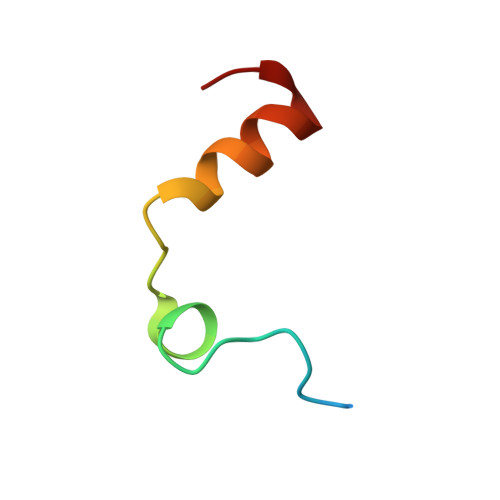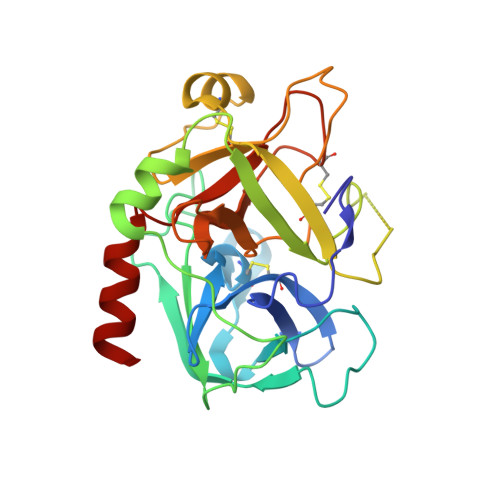Crystallographic and Kinetic Evidence of Allostery in a Trypsin-like Protease.
Niu, W., Chen, Z., Gandhi, P.S., Vogt, A.D., Pozzi, N., Pelc, L.A., Zapata, F., Di Cera, E.(2011) Biochemistry 50: 6301-6307
- PubMed: 21707111
- DOI: https://doi.org/10.1021/bi200878c
- Primary Citation of Related Structures:
3QGN, 3S7H, 3S7K - PubMed Abstract:
Protein allostery is based on the existence of multiple conformations in equilibrium linked to distinct functional properties. Although evidence of allosteric transitions is relatively easy to identify by functional studies, structural detection of a pre-existing equilibrium between alternative conformations remains challenging even for textbook examples of allosteric proteins. Kinetic studies show that the trypsin-like protease thrombin exists in equilibrium between two conformations where the active site is either collapsed (E*) or accessible to substrate (E). However, structural demonstration that the two conformations exist in the same enzyme construct free of ligands has remained elusive. Here we report the crystal structure of the thrombin mutant N143P in the E form, which complements the recently reported structure in the E* form, and both the E and E* forms of the thrombin mutant Y225P. The side chain of W215 moves 10.9 Å between the two forms, causing a displacement of 6.6 Å of the entire 215-217 segment into the active site that in turn opens or closes access to the primary specificity pocket. Rapid kinetic measurements of p-aminobenzamidine binding to the active site confirm the existence of the E*-E equilibrium in solution for wild-type and the mutants N143P and Y225P. These findings provide unequivocal proof of the allosteric nature of thrombin and lend strong support to the recent proposal that the E*-E equilibrium is a key property of the trypsin fold.
Organizational Affiliation:
Department of Biochemistry and Molecular Biology, Saint Louis University School of Medicine, St. Louis, Missouri 63104, USA.

















